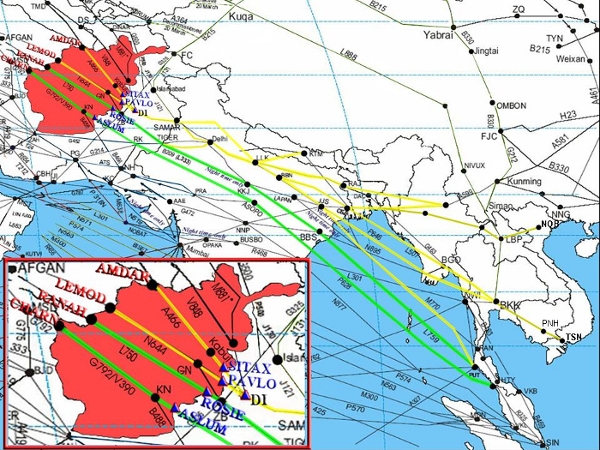Operational Implementation of Air Traffic Flow Management Procedures across the Bay of Bengal from 5 July 2007
The Tenth Meeting of the Air Traffic Flow Management Task Force (ATFM/TF/10) held at the Regional Office from 30 April - 3 May 2007 took a 'Go' decision to advance the ATFM procedures that had been under test in the Bay of Bengal ATFM operational trial since July 2006 to an operational implementation. The ‘Go’ decision will result in the seamless advance from operational trial to permanent implementation of ATFM procedures in the affected airspace on 5 July 2007.

Traffic metering for westbound traffic operating from South-East Asia across the Bay of Bengal via the Kabul FIR (Afghanistan) to Europe during the congested night time period became necessary to manage the large volume of traffic entering the Kabul FIR during the period 2000 - 2359UTC daily. Traffic metering is undertaken using the automated web-based Bay of Bengal Cooperative ATFM System (BOBCAT) developed specifically for this purpose by Aeronautical Radio of Thailand Ltd (AEROTHAI) and the ATFM/TF, in conjunction with a dedicated Air Traffic Flow Management Unit (ATFMU) established at Bangkok ACC. Wheels Up Times and Kabul FIR entry slot times (including flight level and ATS route) calculated by the BOBCAT system are issued to affected flights well before departure from affected airports.
In addition to the large numbers of flights from India, Malaysia, Pakistan, Singapore and Thailand which are affected by the ATFM procedures, the ATFM/TF identified specific cases of long haul flights originating from China, Hong Kong China, Viet Nam, Philippines and Indonesia that also transit the Kabul FIR during the period of application of ATFM procedures.
Under the leadership of the Regional Office, the ATFM/TF was able to address the differing requirements of the seven primary States involved whilst integrating the needs of IATA and the approximately 25 airlines affected. Data available from the operational trial demonstrates that this successful implementation of international long-haul ATFM procedures, the first of its kind in the Asia/Pacific region, will result in significant safety and efficiency benefits including fuel savings for airlines, reduced ATC workload for ANSPs and environmental benefits from flights operating at or near optimum flight levels.
Images courtesy of AEROTHAI
